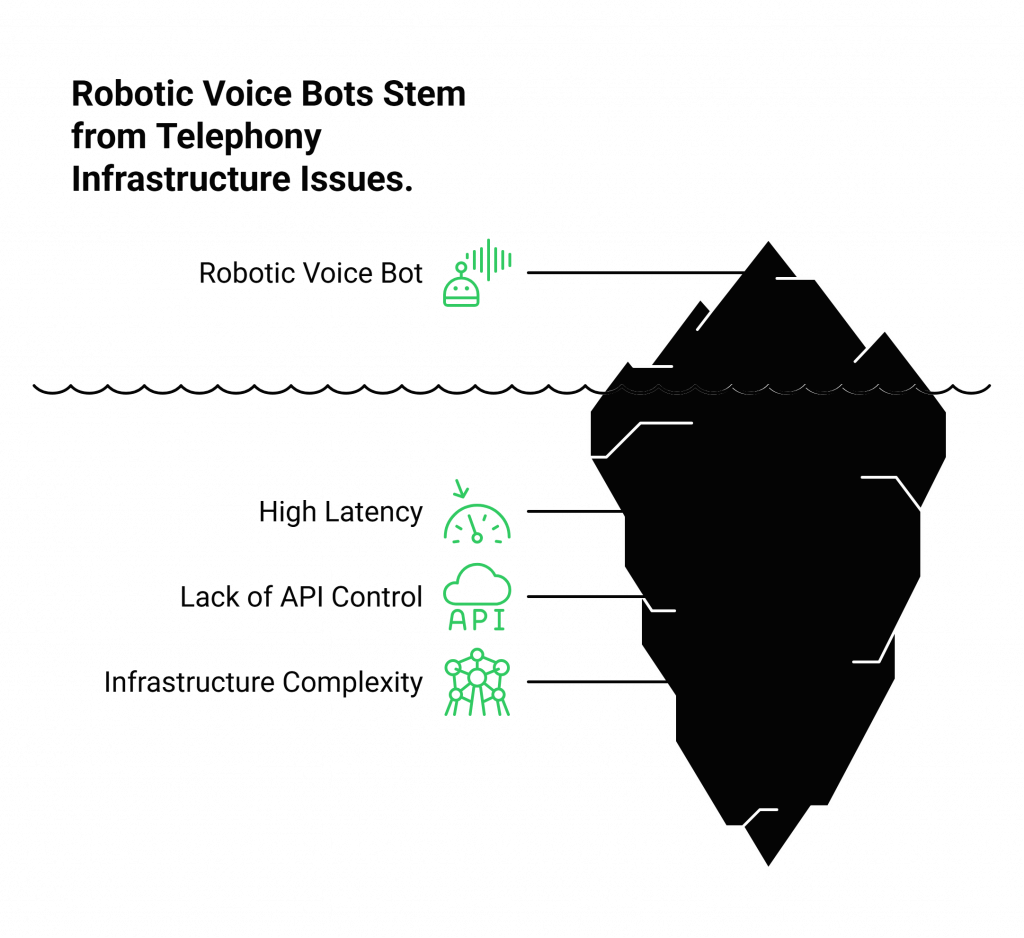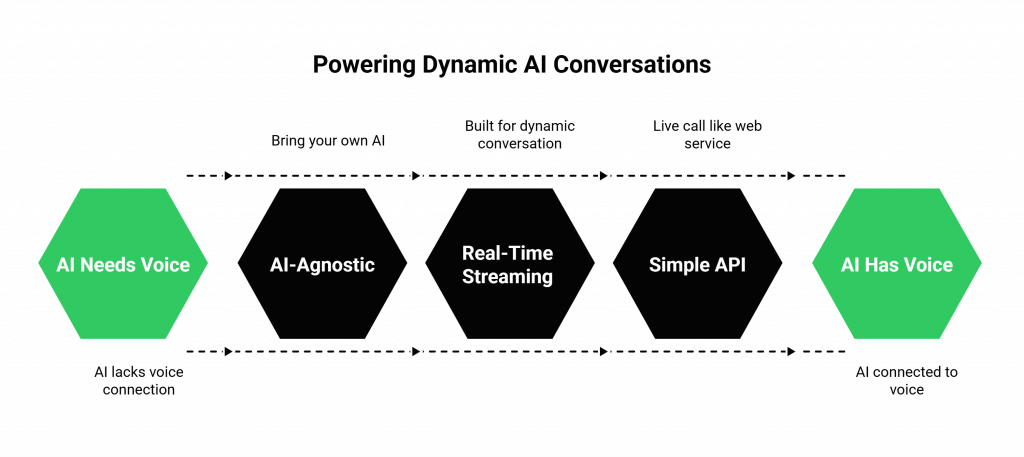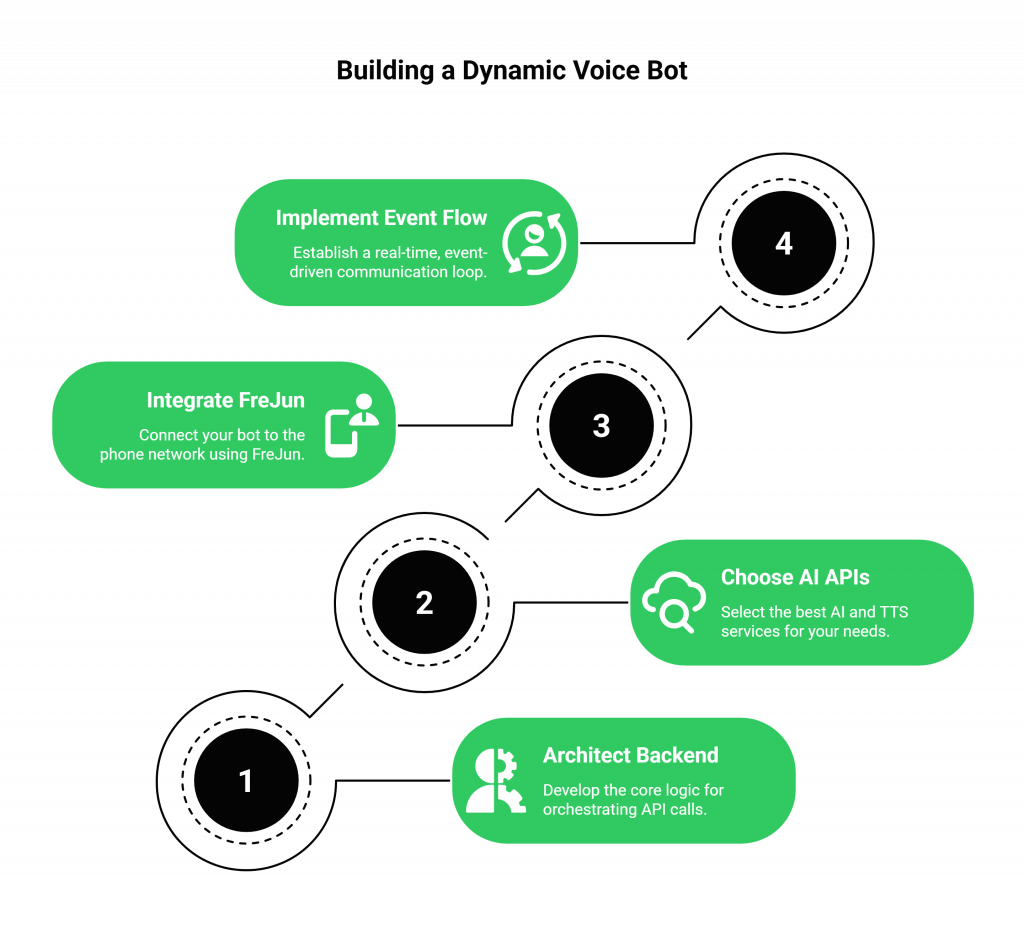For years, the promise of the “talking voice bot” has been just out of reach. We’ve all experienced the frustration of interacting with rigid, robotic IVR systems that fail to understand us, follow a strict and unforgiving script, and crumble at the slightest deviation from their pre-programmed path. These static systems are not conversationalists; they are glorified audio checklists. But a new era of conversational AI has arrived, one defined by fluidity, context, and real-time action. The goal is no longer just to make a bot talk; it’s to power dynamic conversation.
Table of contents
- What is a Truly Dynamic Conversation?
- The Hidden Barrier: Why Does Most Voice Bots Feel Robotic and Static?
- FreJun: The Infrastructure API Built to Power Dynamic Conversation
- Static Voice Bot vs. Dynamic Voice Bot: A Head-to-Head Comparison
- A Step-by-Step Guide to Building Your Dynamic Voice Bot
- Best Practices for a Flawless Conversational Experience
- Final Thoughts: Your AI is Dynamic. Your Infrastructure Must Be, Too
- Frequently Asked Questions (FAQ)
This new paradigm is made possible by a new generation of sophisticated, real-time “talking voice bot APIs.” These APIs consolidate speech recognition, language understanding, and voice synthesis into a single, low-latency pipeline. Yet, a critical and often overlooked challenge remains that prevents businesses from truly harnessing this power. An intelligent AI brain is useless without a nervous system capable of connecting it to the real world, especially over the most critical channel for business communication: the telephone.
What is a Truly Dynamic Conversation?
A dynamic conversation is one that mirrors the natural ebb and flow of human interaction. It is not a rigid, turn-based script. It is a fluid, context-aware dialogue where the AI can:
- Understand in Real Time: It processes the user’s speech as it’s being spoken, not after they’ve finished.
- Handle Interruptions: It allows the user to “barge in” or change the topic mid-sentence, just as a human would.
- Maintain Context: It remembers what was said earlier in the conversation and uses that information to inform its responses.
- Act in Real Time: It can perform actions on the user’s behalf during the conversation, like looking up an order, booking an appointment, or processing a payment, by calling external APIs.
This is the new standard for automated voice interactions, and it’s what customers now expect.
The Hidden Barrier: Why Does Most Voice Bots Feel Robotic and Static?
You’ve decided to build a voice bot using a state-of-the-art AI like the GPT-4o Realtime API. You’ve designed the conversational logic, and it works beautifully in a test environment. Now, you need to deploy it on a phone line. This is where most projects hit a formidable wall.

The problem is that the AI API, while brilliant at processing data, does not solve the underlying infrastructure problem of telephony. To connect your bot to the Public Switched Telephone Network (PSTN), you would have to build a highly specialized and complex voice infrastructure stack from scratch. This involves solving a host of low-level challenges that have nothing to do with AI:
- High Latency: Traditional telephony protocols were not designed for the sub-second, bi-directional streaming required to power dynamic conversation.
- Lack of API Control: There is no simple, modern API to manage the call, handle the raw audio stream, or gracefully manage interruptions.
- Infrastructure Complexity: You would need to build and maintain a global network of media servers to handle thousands of concurrent calls, a massive engineering undertaking.
This is the hidden barrier. Your dynamic AI brain is being connected to a static, inflexible voice channel, resulting in a clunky, robotic experience that fails to deliver on its promise.
FreJun: The Infrastructure API Built to Power Dynamic Conversation
This is the exact problem FreJun was built to solve. We are not another AI platform. We are the specialised voice infrastructure layer that provides the modern, low-latency, API-first connection your AI needs to thrive on the telephone network.

FreJun is the “nervous system” for your bot’s brain. We handle all the complexities of voice transport, allowing you to focus on building the best AI possible.
- We are AI-Agnostic: You bring your own AI. Whether you’re using GPT-4o, Twilio ConversationRelay, or a custom stack, our platform provides the un-opinionated transport layer.
- We are Built for Real-Time Streaming: Our entire infrastructure is built on persistent WebSocket connections, designed from the ground up to handle the bi-directional audio streaming needed to power dynamic conversation.
- We Provide a Simple, Powerful API: Our developer-first API makes a live phone call look like just another web service to your application, giving you the granular control needed for a truly interactive experience.
With FreJun, you can finally connect your dynamic AI to an equally dynamic voice channel.
Pro Tip: Leverage Function Calling for Real-Time Action
One of the key features that helps power dynamic conversation is “function calling.” This allows your AI to instruct your backend to execute a specific piece of code during the conversation, for example, to query a database or call a third-party API. To make this work seamlessly over the phone, you need a low-latency infrastructure like FreJun’s that allows this entire loop, user speech, AI processing, function call, and AI response, to happen in under a second.
Static Voice Bot vs. Dynamic Voice Bot: A Head-to-Head Comparison
| Feature | A Static Voice Bot (Traditional IVR / Simple API) | A Dynamic Voice Bot (Powered by FreJun) |
| Latency | High. Often waits for the user to finish speaking, leading to awkward pauses. | Ultra-low. Processes audio in real time, enabling fluid, natural dialogue. |
| Context Handling | Poor. Often forgets what was said in the previous turn. | Excellent. Maintains a multi-turn conversation state for contextual responses. |
| Interruption Handling | None. User cannot interrupt the bot’s response. | Full “barge-in” support. Users can interrupt at any time. |
| Real-Time Actions | Limited. Can only follow a pre-defined, rigid script. | Full support for function calling. Can perform real-time actions. |
| Flexibility | Low. Difficult and slow to update the conversational flow. | High. Logic is managed in your backend, allowing for rapid iteration. |
| User Experience | Frustrating and robotic. | Engaging and human-like. |
A Step-by-Step Guide to Building Your Dynamic Voice Bot
This guide outlines the modern architecture for building a voice bot that can power dynamic conversation over the telephone.

Step 1: Architect Your Backend for Orchestration
First, build your core conversational logic. Using your preferred backend framework (like FastAPI or Express.js), write the code that will orchestrate the API calls to your chosen AI and business systems. This is the “brain” of your bot.
Step 2: Choose Your AI and TTS APIs
Select the best-in-class services for your needs. You have the freedom to choose a consolidated real-time API (like Azure’s GPT-4o API) or to assemble a custom stack of STT, LLM, and TTS providers.
Step 3: Integrate FreJun as Your Voice Transport Layer
This is the critical step that connects your bot’s brain to the phone network.
- Sign up for FreJun and instantly provision a virtual phone number.
- Use FreJun’s server-side SDK in your backend to handle incoming WebSocket connections from our platform.
- In the FreJun dashboard, configure your new number’s webhook to point to your backend’s API endpoint.
Step 4: Implement the Real-Time Event-Driven Flow
When a customer dials your FreJun number, your backend will spring into action:
- FreJun establishes a WebSocket connection and streams the live audio.
- Your backend receives the audio and streams it to your real-time ASR/AI API.
- The AI processes the audio, understands the intent, and if necessary, executes a function call by communicating with your backend.
- The AI generates a text response, which is sent to your TTS API to be synthesized into audio.
- Your backend streams the synthesized audio back to the FreJun API, which plays it to the caller.
This entire event-driven loop is designed for the sub-second response times needed to power dynamic conversation.
Key Takeaway
The ability to power dynamic conversation is a two-part challenge that requires two distinct types of APIs. First, you need a sophisticated, real-time AI API to act as the bot’s “brain.” Second, you need a robust, low-latency voice infrastructure API to act as its “nervous system.” FreJun provides this second, critical API, handling all the complexities of telephony so you can focus on building the smartest and most capable AI possible.
Best Practices for a Flawless Conversational Experience
- Optimize Latency at Every Step: A natural conversation requires speed. Minimize buffering and use streaming endpoints for every component in your pipeline.
- Design for Failure: No AI is perfect. Implement robust error-handling and graceful fallbacks in your backend logic. Always provide a clear path to escalate the call to a human agent.
- Protect User Data: Use encrypted connections for all API calls and streaming, and ensure your data handling practices comply with all relevant privacy regulations.
- Continuously Monitor and Improve: Use conversation analytics to understand how users are interacting with your bot. This data is invaluable for refining your AI’s logic and improving the user experience over time.
Final Thoughts: Your AI is Dynamic. Your Infrastructure Must Be, Too
The era of the static, robotic voice bot is over. The future of automated customer interaction is intelligent, contextual, and deeply conversational. The AI technology to power dynamic conversation is here today. But that technology is only as good as the infrastructure that delivers it.
By attempting to build your telephony infrastructure, you are choosing to connect your state-of-the-art AI brain to a nervous system of your own making, one that is likely to be slow, brittle, and expensive to maintain.
The strategic path forward is to focus your resources where they can create the most value: in the intelligence of your AI and the quality of your conversation design. Let FreJun AI handle the phone lines.
Further Reading –A Developer’s Guide to Embedding AI Voice Chat in Your App
Frequently Asked Questions (FAQ)
This generally refers to a service that can handle the end-to-end process of a voice conversation. This can be a consolidated API (like the GPT-4o Realtime API) that includes STT, LLM, and TTS, or it can be an infrastructure API (like FreJun) that connects your own stack of AI services to a voice channel.
No. FreJun is a model-agnostic voice infrastructure platform. We provide the essential API that connects your application to the telephone network. This is the core of our philosophy, you have the complete freedom to choose and integrate any AI services you prefer.
Our platform is built on a full-duplex, bi-directional streaming architecture. This means your backend can detect incoming user speech even while it is sending a response. You can design your application logic to handle these interruptions gracefully, creating a more natural conversation.
This architecture is highly scalable. FreJun’s infrastructure is built to handle massive call concurrency. By designing your backend to be stateless, you can use standard cloud auto-scaling to handle any amount of traffic, ensuring your service is both resilient and cost-effective.
Absolutely. FreJun’s API provides full call control, including the ability to initiate outbound calls programmatically. This allows you to use your bot for proactive use cases like appointment reminders or feedback surveys.
